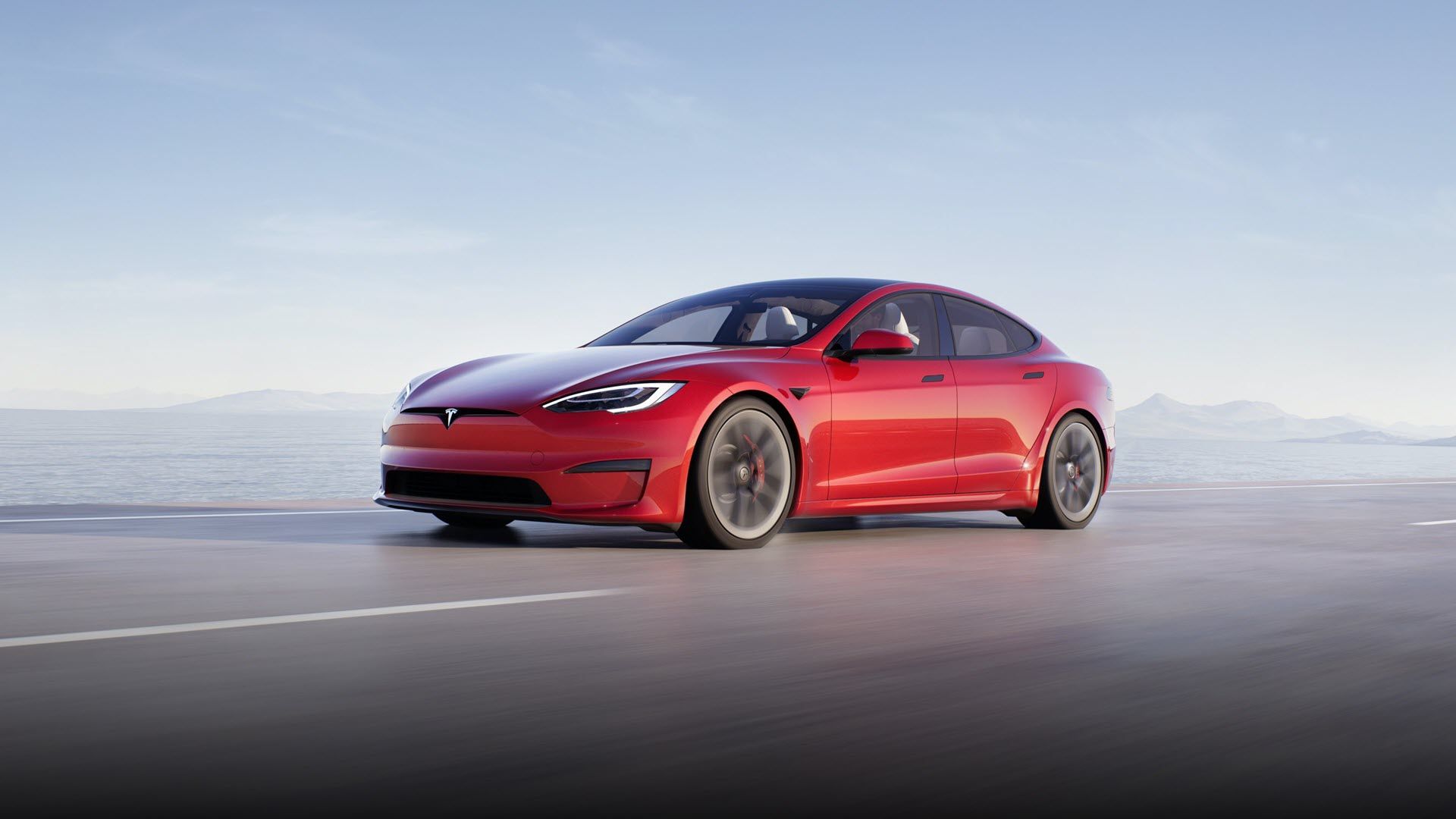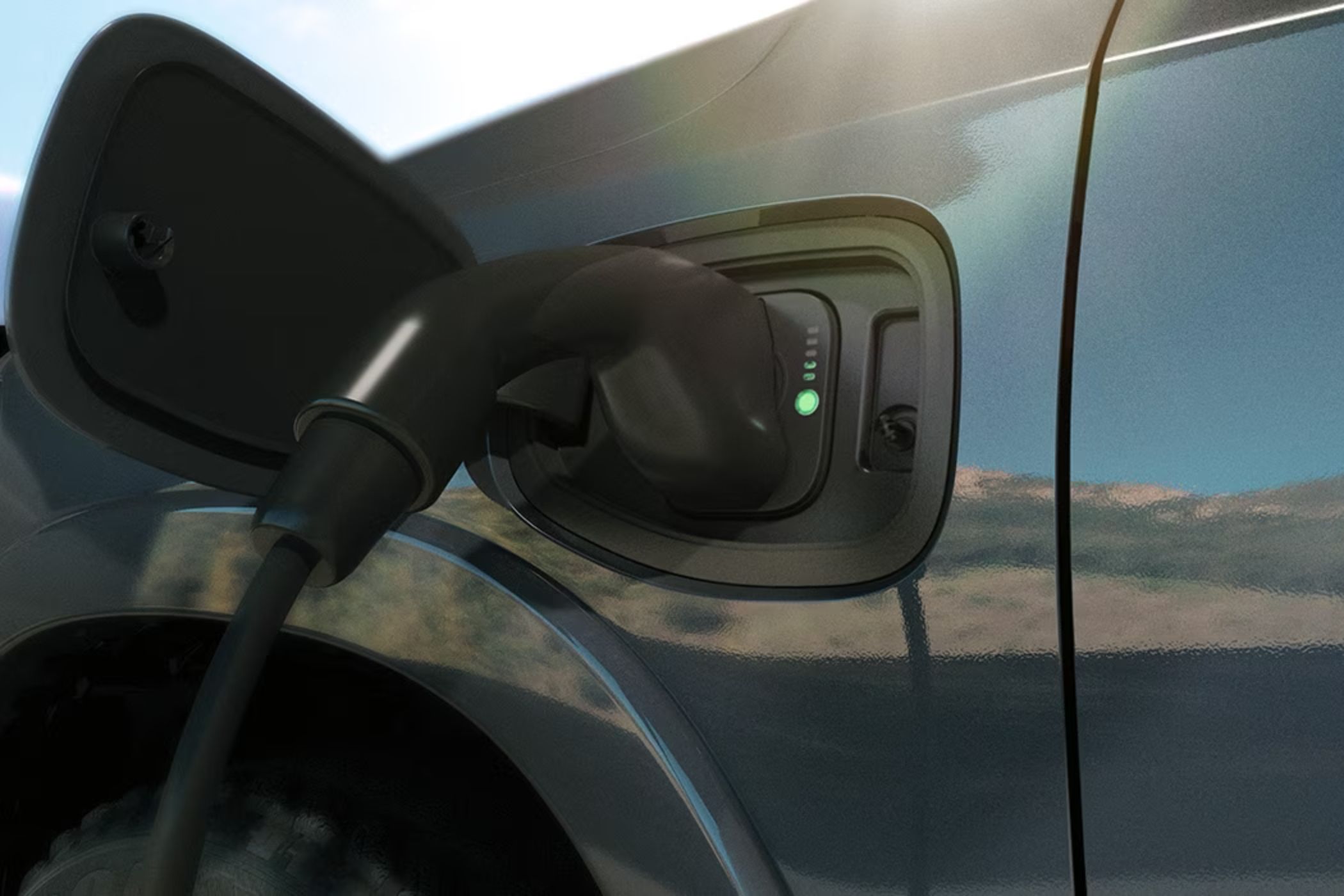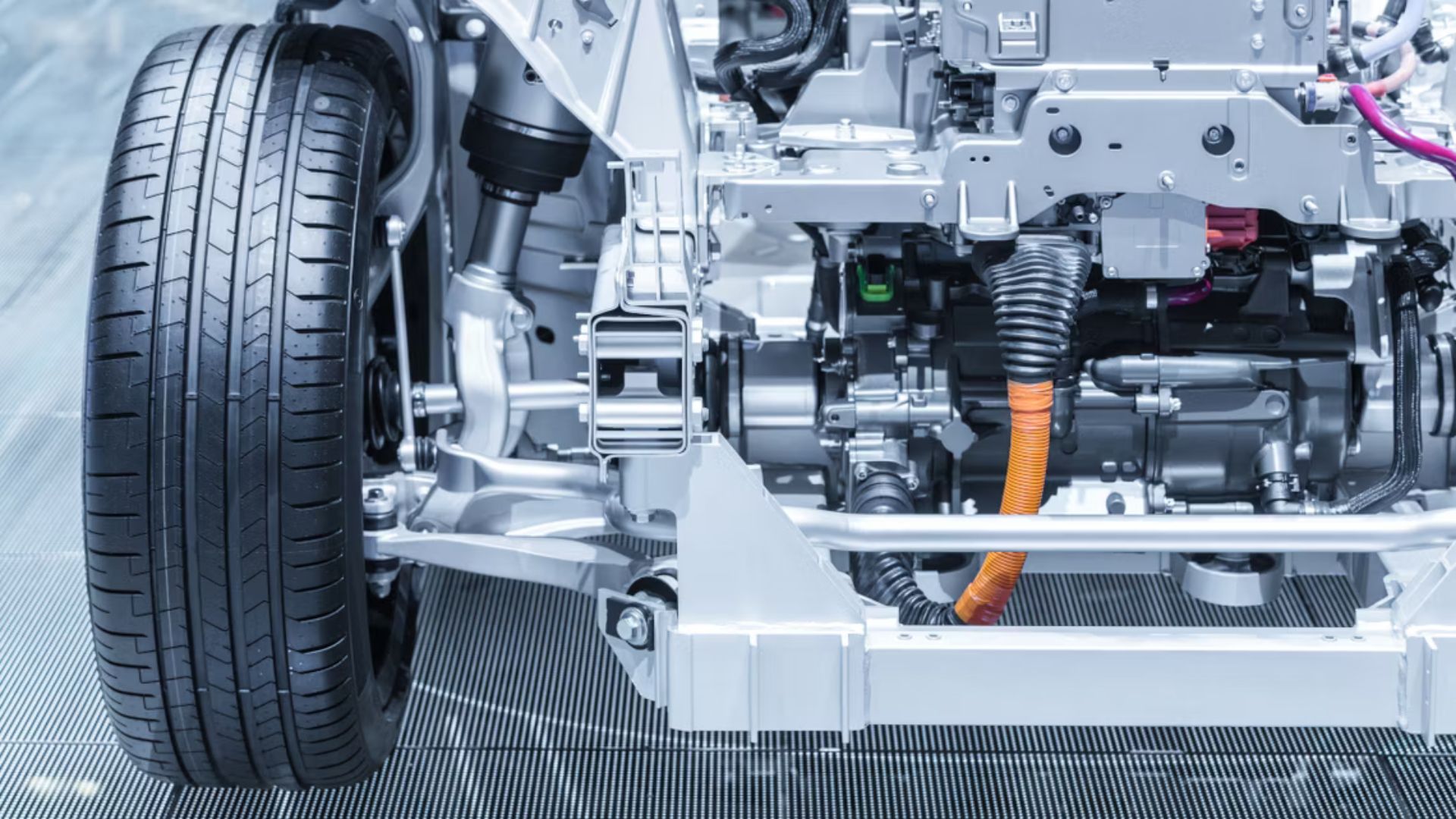
Cost Comparison: Are Electric Vehicles More Affordable than Traditional Internal Combustion Engines?

Cost Comparison: Are Electric Vehicles More Affordable than Traditional Internal Combustion Engines?
Key Takeaways
- EVs are generally more expensive upfront compared to ICEs from the same manufacturer and year.
- The cost of running an EV, including fuel/electricity and maintenance, is typically lower than running an ICE.
- Insuring an EV can be more expensive than insuring an ICE due to the higher cost of EV parts and repairs.
It’s easy to assume that electric vehicles are catered towards those with a higher budget, as most models have a fairly high market price. But are EVs really the more expensive option overall, or are gas and diesel cars pricier than you’d think?
The Initial Cost of EVs and ICEs
The upfront price of a vehicle is what buyers tend to first consider when shopping around for a new ride. Typically, this is the largest cost incurred when you buy a car, so it’s natural to keep it at the top of your list. So, when it comes to upfront price, how do ICEs (Internal Combustion Engines) and EVs (Electric Vehicles) compare to each other?
Of course, different car manufacturers can have different price brackets. For instance, Toyota and Honda offer some very budget-friendly cars, whereas Mercedes and Jaguar models tend to start at a higher price bracket. So, to keep the comparison more direct here, we’ll look at the prices of EVs and ICEs from the same manufacturer and year.
| Vehicle Type | Make and Model | Year | Price |
|---|---|---|---|
| ICE | Nissan Micra Base Model | 2023 | $16,300 |
| EV | Nissan Leaf Shiro | 2023 | $36,300 |
| ICE | Chevrolet Malibu 2LT | 2023 | $32,000 |
| EV | Chevrolet Bolt 2LT | 2023 | $30,695 |
| ICE | Mistubishi Outlander | 2023 | $28,395 |
| PHEV | Mitsubishi Outlander | 2023 | $40,345 |
| ICE | Fiat 500 | 2023 | $19,690 |
| EV | Fiat 500e | 2023 | $34,095 |
As you can see above, the majority of manufacturers price their EV models higher than their ICE models. There are exceptions out there, such as Chevrolet’s Malibu 2LT and Bolt 2LT. While one of these models is an ICE and the other is an EV, the two come in at the same price.
However, what we don’t see is an EV that’s cheaper than a similar ICE produced by the same brand. This is because EVs are generally more expensive to produce than ICEs, mostly due to their batteries. According to an Energy5 report , the general cost of producing an EV battery ranges between $130 and $250 per kWh. EV Database reports that a Tesla Model S battery has a storage capacity of 100 kWh, meaning it could cost anywhere between $13,000 and $25,000 to produce a single Model S battery, according to Energy5’s statistics.
With this in mind, the cost of EVs compared to ICEs starts making more sense. However, the point still stands: EVs are usually considerably pricier than ICEs.
EV Home Charging Installation
Before you start charging your EV at home, you need to set up your charging station, which involves a wall connector and cable.
According to Fixr.com , the average cost of setting up a home EV charging station in the US is $1,200, with an average range of $1,000 to $2,500. These figures relate to the installation of a 240-volt Level 2 charger and wall-mounted system, but prices can get as steep as $4,500 if your charging station has additional features, such as a circuit panel upgrade or pedestal mount.
Setting up an EV home charging station is optional, but, if you choose to go ahead with it, it’ll likely add a substantial amount onto the up-front EV price.
The Costs of Running EVs and ICEs

Tesla
As we all know, the upfront price of a vehicle is far from where the costs end. Fuel, maintenance, insurance, and vehicle inspections amount to thousands, or even tens of thousands of dollars, over a car’s lifetime. But which is more expensive to run over time: an EV or an ICE?
Fuel and Electricity
The most frequent cost one incurs with their ICE is from fuel, be it gas or diesel. Gas and diesel prices are always changing, but they generally increase over time in the US. According to the AAA website , the average US price of gas on December 12, 2023, was $3.137 per gallon. To fill a 15-gallon tank, it will cost just over $47.
The US Energy Information Administration reported that, on December 11, 2023, the average US price of diesel was $3.136 per gallon. To fill up a 15-gallon tank for a diesel engine will also cost just over $47. Depending on how much you use your car, you may fill your tank daily, weekly, or on an even rarer basis, so the cost each individual will incur varies based on lifestyle.
But how do EV charging prices compare here?

RAM
EV charging prices depend on two things: the general electricity rate in a given area, and the additional fees charged by the provider if a public charging station is being used. For home charging, one also needs a charging cable, though these often come with the car as part of the upfront price.
Let’s take a look at a given EV-owner in Texas, for example. SaveOnEnergy reports that the cost of electricity in Texas in August 2023 was 14.01 cents per kWh. To charge a Chevrolet Bolt at home, with a battery capacity of 65 kWh, it would cost just over $9 in Texas. On the other hand, to fuel up a Chevrolet Malibu 2LT (with a tank size of 15.8 gallons) with gas, it would cost just under $50, according ot the AAA statistics used previously.
Even if you’re in California, a state in which electricity rates are higher than the rest of the US, you can still save with an EV. As reported by Energy Sage, the average Californian electricity rate is 30 cents per kWh. If you charge the same Chevrolet Bolt at home in California, you’ll spend $19.50.
Public charging stations like Electrify America and ChargePoint not only charge for the electricity used; an additional fee is charged for use of the equipment, which makes things a little pricier. These stations can charge by the kWh or the minute. ElecrifyAmerica, for instance, can charge either way, though this fee will vary based on your location.
To truly understand the price differences here, it’s important to consider EV range versus fuel tank capacity.
A Chevrolet Bolt has a range of 259 miles according to the manufacturer website , meaning every 0.25 kWh of its 65 kWh battery capacity covers one mile. Given that it costs $9 to charge a Chevrolet Bolt fully in Texas (as discussed above), this means that each kWh costs $0.14, and so each mile taken by the Bolt costs $0.035.
On the other hand, if you’re fueling up a Chevrolet Malibu, the tank has a capacity of 15.8 gallons, so, according to the gas prices previously mentioned, it would cost just under $50 to fully fill a Malibu. How far this can take you varies depending on speed, weather conditions, road conditions, and more, but according to Insurance Navy Brokers , one gallon of gas can provide between 20 and 30 miles of range. Let’s go in the middle here and say 25 for the sake of our calculation.
If one gallon of gas can take you 25 miles, a 15.8-gallon Chevrolet Malibu should be able to take you 395 miles. If it costs $50 to fill up a 15.8-gallon tank in the US (as previously discussed), this means that each mile is costing you $0.13, compared to a Chevrolet Bolt’s rate of $0.035 per mile.
Evidently, there’s a huge difference in running costs between EVs and ICEs, which can mean a difference of thousands of dollars over a vehicle’s lifetime.
Insurance
In many countries, insuring your car is a legal requirement. In the US, all drivers must have car insurance, but the cost of this cover can vary based on various factors, such as your age, previous driving convictions, and your vehicle’s engine size.
Whether you’re driving an ICE or EV can also affect your insurance quote. So, what do these varying rates look like?
At the time of writing, it is generally more expensive to insure an EV than an ICE. According to ValuePenguin , EVs cost 25 percent more to insure than their ICE equivalents, a hefty difference indeed.
Furthermore, Insurify conducted a direct comparison of certain EV models’ insurance rates compared to their ICE equivalents. For example, insuring a gas-powered Ford Mustang costs $288, whereas ensuring a Mustang EV costs $309. Similarly, insuring a gas-powred KIA Soul costs $223, but insuring the EV alternative costs $232.
This isn’t because EVs are less safe than ICEs. Rather, it mostly comes down to the cost of EV parts. As previously discussed, EV repairs are more expensive than ICE repairs, so if your insurer is paying the bill when a repair is needed, they’re going to offer a higher premium from the get-go to cut their losses.
Repairs and Maintenance

Sergii Chernov/Shutterstock.com
On top of fueling or charging up, ICEs and EVs also need fairly regular maintenance . Changing brake pads, windscreen wipers, and tires all comes at a cost, and fixing faulty hardware can also be very pricey. Of course, the price always varies depending on what’s being fixed or replaced, but all costs are worth keeping in mind here.
Because ICEs are more mechanically complex than EVs, there’s more of a chance of something going wrong with the former than the latter. However, because EVs are more niche than ICEs, there’s a good chance an EV replacement part will be pricier. According to CCC Intelligent Solutions , the average total cost of repair on a non-luxury EV model from a front-end impact is $4,041. On the other hand, the average cost of repair on a similar grade of non-EV model for the same kind of impact is $3,191.
When looking at luxury car models, CCC Intelligent Solutions also reported a difference in repair costs for front-end collisions. While repairs cost an average of $8,037 for EVs, they drop to an average of $5,242 for non-EVs.
The Verdict
When it comes to overall cost, EVs and ICEs have their own ups and downs. While EV prices aren’t very affordable , they’re much cheaper to run than ICEs. It’s also important to note that, over time, the cost of new and used EVs compared to ICEs may decrease as manufacturers find more cost-efficient ways to produce vehicles.
What’s more, the increasing scarcity of gas and diesel will likely cause the cost of fuel to increase as the years pass (on top of general inflation). But legal limitations placed on ICEs could have the opposite effect. In the UK, for example, a law has been put in place that will ban the purchase of new petrol and diesel cars after 2035. After this point in time, the demand for ICEs will plummet, which will also have a domino effect on the demand for petrol and diesel. This could cause a price drop for these fuels, which will be good news for those who still own ICEs.
On the other hand, a boost in EV demand when laws like this are put in place may result in higher prices for electric cars and parts. There’s no knowing how this will play out yet, but it’s worth keeping in mind that things are likely to change a lot in the next decade or so.
Check out our piece on EV myths and misconceptions to make sure you’re not making any incorrect assumptions about electric cars.
EV and ICE costs don’t stop at the price of the vehicle. There’s a myriad of other factors you should also consider to determine whether an ICE or an EV is the best option for you. Keep the pointers above in mind before you buy your next car.
Also read:
- [New] 2024 Approved Unlocking YouTube's Encrypted Video Secrets
- [New] Revolutionizing Video Views, Conquering YouTube Millions for 2024
- [New] Top TikTok Edits Mastering Your Cut Lists
- [New] Unlocking Creativity Mastering iOS Screen Capture for YouTube
- [Updated] 2024 Approved Broad Reach Strategy Share Your Twitch Channel on Facebook
- [Updated] 2024 Approved Innovative Approach to Revamping Your Videos' Cover Images on FB
- [Updated] Fix Facebook Videos Not Playing on Android/iPhone/Chrome for 2024
- [Updated] Leading Websites for Acoustic Phone Alerts
- [Updated] Strategies for Silent Audio Fades
- Best WinX DVD Ripper and Audio-Video Converter Toolkit for Easy Media Handling
- In 2024, The Complete Blueprint for iPhone Podcast Downloads
- Tailoring iPhone Audio A Ringtone Makeover Journey for 2024
- The Fast Track to Zooming Proficiency for 2024
- The Ultimate Guide to iPhone Light Balancing for 2024
- The Ultimate Selection of Christian Streaming Sites for 2024
- Title: Cost Comparison: Are Electric Vehicles More Affordable than Traditional Internal Combustion Engines?
- Author: Mark
- Created at : 2024-12-26 16:40:09
- Updated at : 2025-01-02 16:47:47
- Link: https://some-guidance.techidaily.com/cost-comparison-are-electric-vehicles-more-affordable-than-traditional-internal-combustion-engines/
- License: This work is licensed under CC BY-NC-SA 4.0.